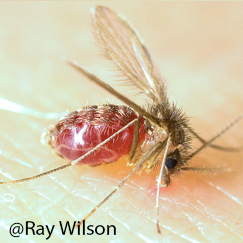Description
Material provided: Whole sandflies, dissected tissues, or extracts
Unit definition:100 females adults (25 if dissected)
Availability: This product is designed for projects that require up to 10 units of sandflies, infected sandflies or sandfly-derived products (all species combined) per order. The product is particularly aimed at pilot and exploratory-scale projects. Please contact the TNA Manager for larger requests or additional information.
For projects requesting more than 10 units of infected vector material, we strongly suggest that you consider our Facility Access products. You can design and implement your own infection experiment, using custom conditions, with expert technical aid, in world-class secure insectaries. For sandflies infection experiments, you can ask for a visit at CUNI. All laboratory costs and materials are included, and travel and lodging are subsidized. One unit is a grant of one week of facility access.
Vector information
Family: Psychodidae
Genus: Phlebotomus
Species: Phlebotomus arabicus
Place of origin: Israel
Date of colonisation: 2003
Parasite information
Pathogens used for infection: Leishmania spec.
Parasite name: L. tropica
Strain: L. tropica (IARA/IL/2000/LRC-L810), (MHOM/IL/2001/LRC-L863)
Sequencing: www.TriTrypDB.org
Infectivity: verified
Production protocol
3-5 day old females are fed through chick-skin membrane on the mixture of heat inactivated rabbit blood and Leishmania promastigotes in final concentration 106 promastigotes / ml. Engorged females are separated, fed with 50% sucrose on cotton wool and maintained at 26°C. Infected sand fly females are shipped frozen on dry ice or fixed under non-infectious conditions. Details are described in references below.
Product options
Please specify in your request:
Time post-infection: Please specify time point post-infection to harvest the samples. The most common options are early infection (females before defecation, 24-48 h post-infection) and mature infection (after defecation, 6-7 d post-infection), but other times are possible by request, contact us.
Whole or dissected: Instead of 100 whole sandflies, material can be supplied from dissected material harvested at the appropriate time point: 50 dissected midguts or 50 dissected salivary glands, provided with the corresponding carcasses.
Form of material:
- Whole sandflies or dissected tissues, fixed in 70% ethanol, formalin, or other fixative: useful for DNA extraction from 70% ethanol, immunohistochemistry, not useful for RNA experiments or proteomics. Shipped as non-infectious material.
- Whole sanflies or dissected tissues, homogenised in a lysis buffer such as Trizol: useful for RNA, DNA and protein experiments. Shipped as non-infectious material.
- Whole sandflies or dissected tissues, frozen at -80°C or stored in RNALater: useful for RNA, DNA and protein experiments. Shipped as non-infectious material.
- Other formats or preparations may be possible by request, contact us.
Production conditions: Material is generated using default promastigote dose and incubation temperature used by the supplying facility. Other conditions may be possible upon request, contact us.
Sample size and replicates: For larger sample sizes, request more units. Please specify if independent infections are needed as biological replicates (e.g., for RNAseq transcriptional profiling experiments).
Publications
- Myšková et al. (2008) Leishmania in Sand Flies: Comparison of quantitative polymerase chain reaction with other techniques to determine the intensity of infection. J Med Entomol 45: 133–8.
- Volf et Volfova (2011) Establishment and maintenance of sand fly colonies. J Vector Ecol 36 (Suppl 1): S1-S9.
- Svobodova et al. (2006). Experimental transmission of Leishmania tropica to hyraxes (Procavia capensis) by the bite of Phlebotomus arabicus. Microbes and Infections 8: 1691-1694.
For more information, please contact us.

